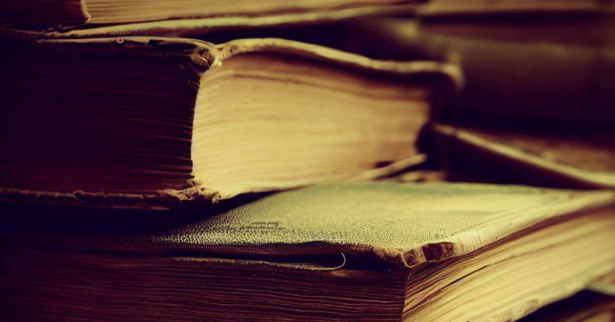Have you ever wandered into an old library or dusty bookshop and paused to breathe in that familiar vanilla-coffee-grassy scent wafting off the aged tomes? That nostalgic olfactory experience is thanks to a bouquet of chemical compounds.
Modern books smell different because of changes in manufacturing, while old books release distinctive volatile organic compounds (VOCs) as they slowly decay. Scientists are sniffing out these VOCs to reveal secrets about a book’s age, condition, and history.

The Chemistry of Paper
Paper is made of cellulose fibers bound by lignin, while inks and bindings add other organic compounds. Cellulose is a polymer made of long glucose chains, while lignin is a complex polymer found in plant cells.
Over time, light, heat, and moisture cause the paper and compounds to break down, releasing VOCs that vaporize into the air. The manufacturing process also affects the VOCs released as the book ages.
Telltale Scents
An almond scent comes from benzaldehyde in the paper. Vanillin, the main compound in vanilla, is responsible for a sweet vanilla fragrance. Ethylbenzene, used in inks and paints, has a sweet plastic smell. 2-Ethyl hexanol, found in solvents and scents, smells lightly floral.
New books use modern chemicals like hydrogen peroxide and alkyl ketene dimers, so they give off different VOCs. The VOCs can also indicate exposure to smoke, water damage, or other aging factors.
Reading the Chemical Clues
Scientists can analyze the VOCs from an old book to determine its age and condition. The mix of compounds can reveal if a book came from an early print shop versus a late 19th century press. They can also identify degradation and preservation needs.
Librarians and historians use VOC analysis to study collections and even match orphaned books with the libraries they came from based on chemical fingerprints. It provides clues to an old tome’s origins and secrets as it aged over decades or centuries.
The Life Story in a Whiff
So next time you get a whiff of an old book, take a moment to enjoy that aromatic time capsule. Its scent has a story to tell, echoing the people, places, and processes that brought an ancient text to you. With each sniff, we get a little closer to understanding our bibliophilic past.
FAQs
Why do old books smell the way they do?
Old books release volatile organic compounds (VOCs) as they slowly decay over time. The specific VOCs depend on the paper, inks, and binding materials used, which give old books their distinctive scents.
Do new and old books smell different?
Yes, new books tend to smell more crisp and fresh, while old books have mustier, sweeter scents. This is because new book manufacturing uses different chemicals that produce different VOCs as they break down.
What chemicals cause that nostalgic old book smell?
Compounds like benzaldehyde, vanillin, ethylbenzene, and 2-ethyl hexanol are often responsible for old book scents. Benzaldehyde has an almond-like scent, vanillin smells like vanilla, ethylbenzene is sweet and plastic-y, and 2-ethyl hexanol is lightly floral.
Can scientists learn about a book’s history from its smell?
Yes, analyzing the volatile organic compounds released by a book can reveal details about its age, manufacturing origins, condition, and past exposure to elements like smoke or water. This helps determine preservation needs.
How does paper decomposition create VOCs?
Paper is made of cellulose and lignin. Over time, heat, light, and moisture cause these polymers to break down and release VOCs, which enter the air. The specific VOCs depend on the paper production process.
Do libraries and museums use VOC analysis?
Libraries and museums are beginning to use VOC analysis to identify preservation needs in collections. It can also help match orphaned books by chemical fingerprint to determine their original source library.

I agree heartily with puneybones!
LikeLike
Are these old books a health hazard?
LikeLike
So interesting- I love the smell of old books.
LikeLike
Demeter makes a fragrance called Paperback that tries to capture this scent. It comes close 🙂
Libraries are like massive gardens to me.
LikeLike
Oh wow. This aroma is a garden of happiness
LikeLike